order

Coleoptera
“Adult Beetles”

Coleoptera
“Larval Beetles”

Diptera
“True Flies”

Ephemeroptera
“Mayflies”

Hemiptera
“True Bugs”

Lepidoptera
“Aquatic Caterpillars, Snout Moths”

Megaloptera
“Alderflies, Dobsonflies, and Fishflies”

Odonata
“Dragonflies and Damselflies”

Plecoptera
“Stoneflies”

Trichoptera
“Caddisflies”
family
Calopterygidae
genus
Calopteryx
“Jewelwings”
Genus Overview
Calopteryx, with 5 North American species, is the most common and widespread genus in the Calopterygidae. Members of this genus live along the margins of lotic-erosional and depositional habitats, in areas of moderate or slower flow, where they climb slowly on plants or detritus. Like other members of the Odonata, they are engulfing predators.
Characteristics
POLLUTION TOLERANCE
Southeast: up to 8.3
Upper Midwest: up to 5
Midwest: up to 3.7
Mid-Atlantic: up to 6
0 = least tolerant, 10 = most tolerant
FEEDING HABITS
Engulfer / Predator
MOVEMENT
Climber
DISTRIBUTION
Widespread (east of the Rocky Mtns.)
HABITAT
Lotic-depositional
Lotic-erosional
Lotic-erosional
Diagnostic Characters
Order
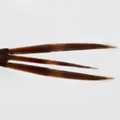
Abdomen with 5 Sharp Stiff Points or 3 Gills
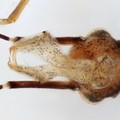
Labial Mask
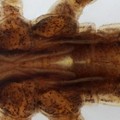
Two Pairs of Wing Pads
Family
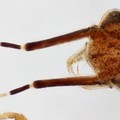
1st Antennal Segment Long

3 Tracheal Gills
+ Expanded Character List
Order:
Nymph with mask-like labium below chewing mouthparts. Wings developing in wing pads. Segmented legs present, each with two claws.
Family:
Suborder Zygoptera (i.e., damselflies: as shown by slender body shape, head wider than thorax and abdomen; 3 long feather-like gills present at posterior end of abdomen). First antennal segment long, each subequal to length of rest of its antenna. Labial mask with deep, open, diamond-shaped, median cleft at apex. Lateral gills at posterior end of abdomen triangular in cross section.
Genus:
Labial mask with cleft reaching nearly halfway to base. Abdominal segments 9 and 10 without spines on posterolateral margins. Lateral caudal gills flat, not conspicuously triangular in cross-section.
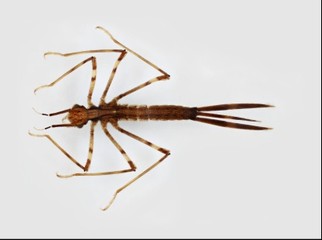
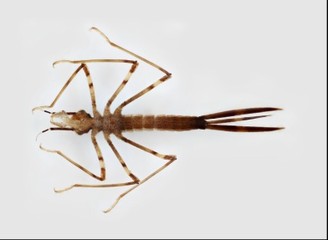
Dorsal
Ventral



